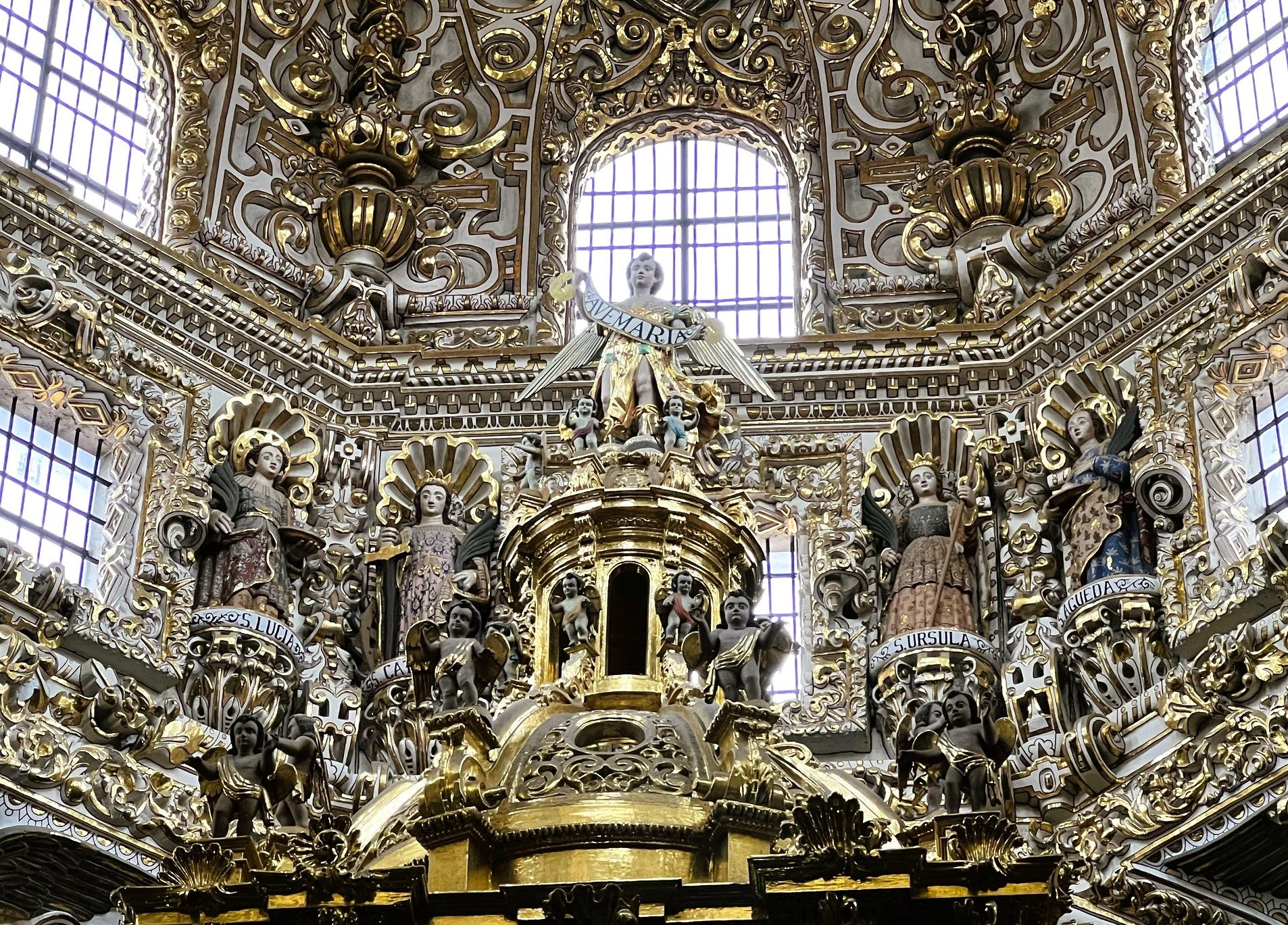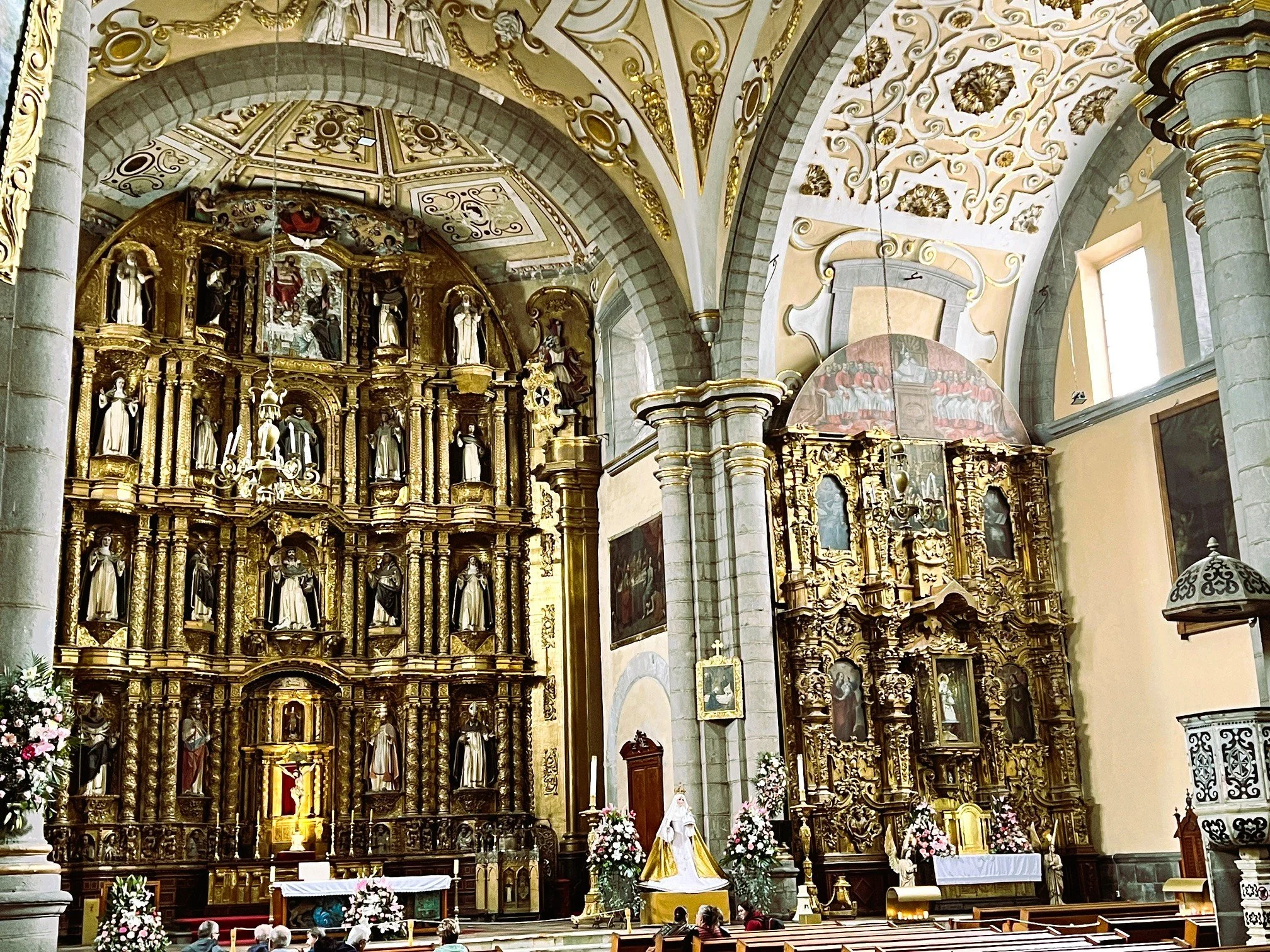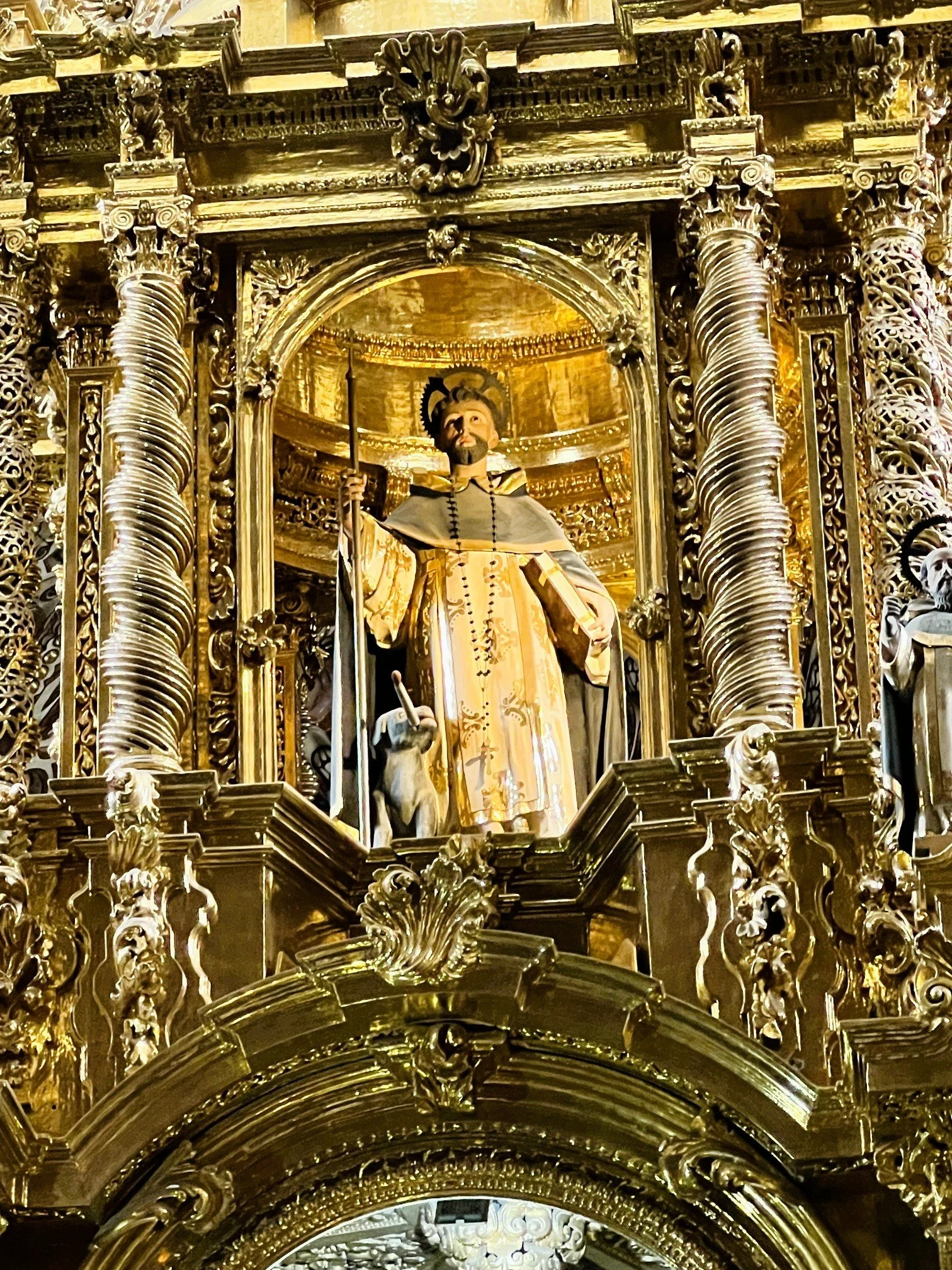Jonathan C. Lewis
Author and Artist
Going for Baroque
A fictional travelogue; four minutes to read.
When the Puebla, Mexico, customs official asked about the purpose of my visit, I muttered “vacation.” When he asked if I had anything to declare, I didn’t tell him about the crumpled-up sorrow, like so much dirty laundry, jammed into the side pocket of my battered suitcase,
My baggage is a former friendship. After years of working together—he taught math, I taught history—we went from allies to not knowing each other. Where once I saw a fellow teacher—a feeling man of Catholic faith and catholic pleasures, now there is a barbaric man.
When a high school student group formed with a plan to convince the school board to make our campus a sanctuary for immigrants. I volunteered to be the faculty advisor arguing, “These kids are nuts if they think the school district lawyer isn’t going to immediately kill their idea on liability grounds alone. Still, their hearts are in the right place.”
Half leaving his seat, my colleague’s face reddened, he spit out, “I don’t like the idea of our school being turned into an encampment for maids and gardeners.” I’ve never had much of a poker face and in that moment my face must have registered open horror. Shoved into a seething speechlessness, I haven’t talked with him since.
Like stepping into medieval stone church in winter, a coldness shuddered up and down my body. It’s unnerving to hear unchristian thoughts from Christians. If church-goers don’t "love thy neighbor as thyself," what chance is there for the rest of us?
When my colleague revealed his prejudice, I also learned that I can’t trust myself to trust the people I once trusted. My ability to judge human character is defective.
Puebla is my chance to find faith again. Not in a god, but in myself.
I am not the first person here to seek solace from life’s disappointments and difficulties. Seventy churches and cathedrals crowded into the historic center offer the very best in Baroque spiritual distraction.
In its heyday, Baroque art and architecture entertained and bedazzled the peasantry. On Sundays lacquered cherubs dancing to the Lord’s Prayer glittered away the week’s drudgeries. Mind-control by glitz.
America’s grand deflections—football half-time shows, grandiose arena concerts, mega-churches—have the same mesmerizing purpose. For a few hours, Spanish Baroque is a painkilling opioid. Among the ghosts of the holy sisters, I found an oasis.
At the Chapel of the Rosary the sixty-foot-high walls, the altar, the ceilings, the columns are gilded with gold leaf. To honor Jesus throwing out the money changers, no expense was spared. The church is a gaudy hodge-podge of figurines, angel wings, moldings, spires. The glossy ornamentation crowds into my eyes.
For centuries baroque facades, embroidery, statuary and music have stirred the human heart: Lose yourself in me. Let me help you forget. Share in my extravagance, my opulence, my generosity.
But I’m not in a generous mood. Gold leaf only goes so far.
I slouch into a pew. I look around. Well-tailored people, mostly the elderly, are quietly praying. I don’t see many maids or gardeners.
I fight back a dry heave.



